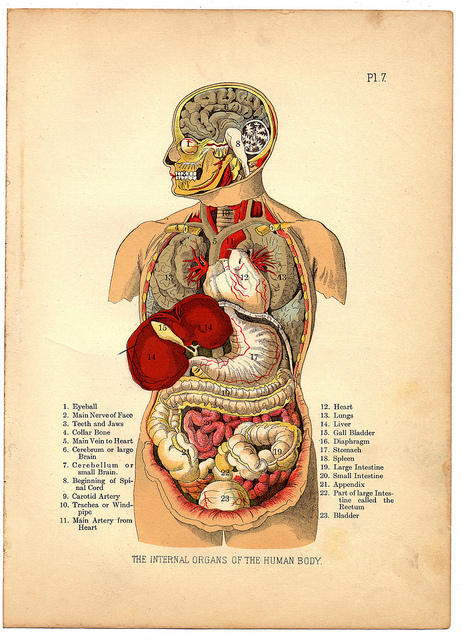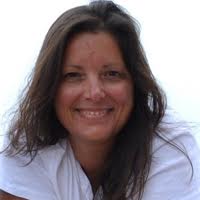
Healing the body-mind-spirit requires a conference call between the triplets and none of them napping with the mute button on.
As a manual therapist, I work with team body-mind-spirit. I came to this line of work, as most practitioners do, to resolve my own pain, both emotional and physical.
At 50, bored and exhausted, I gave up searching for my healing, leaving it at “good enough” by declaring myself healed.
But good enough isn’t good enough—not for me and not for anybody.
Fortunately (add in snarky snort laugh here), a random, unexpected intrusion of PTSD threw my concept of “healed” out the window. It wasn’t pretty, and I nearly throttled a 20-something chicklet at six in the morning.
A doctor was (unnecessarily) concerned that my recent headaches, visions of multi-hued lightning bolts, and high blood pressure were symptoms of a stroke. For the M.D.’s peace of mind, a young woman settled me on a narrow plank to take a picture of my brain.
Eyes closed, I rode into the machine in mid-joke to myself about the squeeze-for-help mechanism in my hand, when an expelling breath bounced off the tube into my face. Panic prodded a burr in my psyche to alertness. Suddenly, I couldn’t breathe.
Repeatedly pressing S.O.S. brought no response from the technician. I chanted a stream of words to calm my surprising hysteria. Oh no. It’s okay. Breathe. I can do this. The girl’s a dumb twit but how far can she have gone. Oh God I’m gonna die. My body pulsated as I resisted the urge to open my eyes. Don’t open them. Don’t scream. Don’t move. Don’t, don’t, don’t!
My brain was exploding, stroke concerns were now seemingly true. Straps encasing my skull made it impossible to shimmy out. Lost in my mind, I heard screams, though my lips were pressed tightly shut.
During this experience of PTSD, it was as though a video was on non-conscious replay with unresolved emotions and memories from an ancient horror movie. I’d reacted with similar symptoms in other highly charged situations, but instead of recognizing the reality, I had designated those as “overwhelmed outbursts that everyone has.”
In other words, I closed my eyes and smiled for the camera.
The technician finally heeded my signal flare and eons later, I leapt off the plank as the girl released the straps.
“Yeah, that happens sometimes. People freak out.”
Her nonchalance caused me to clench my hands to restrain myself from ripping her hair out by the fistfuls. Later, when I was alone and no longer hyperventilating, I grit-teethed-responded. “Not me. I’m healed.”
I wasn’t healed. Far from it.
I’d convinced myself I was done healing from childhood abuse because I wanted to be done. I figured it was long past time to be finished processing my early years.
Then again, I’m one of those who fast-forwards through commercials.
After the brain scan, instead of allowing me to continue dragging old wounds through life, PTSD took hold and wouldn’t let go, keeping me anxious and volatile most minutes of every day. My body-mind-spirit tripod had doubled down.
It‘s all or nothing, “healed” was the only option.
Without an accessible fast-forward button, I reignited my quest for healing. And for the first time, I practiced what I have preached as a facilitator for wellness.
I consciously brought together my triplets to chat on the same phone call. These are the therapies we utilized to bring me back to health:
Most every worthy enterprise needs a powered intention.
It takes the healing process from throwing darts at the Universe, to splitting a hair with a bolt of lightning. Do this by stating out loud, “I choose complete healing.” (Since I believe in magic, I was outside under a full moon in front of a large body of water, adding in, “Hey whoever is out there with pixie dust, this would be a really good time to zap me some ju-ju.”)
An intention isn’t one and done. It needs to be relentless and matched by courage, allowing for no other possibility but full resolution healing.
With the mind/spirit confirmed for a healing connection, a body needs a wake-up call.
I utilized Visceral Manipulation (VM), which primarily addresses our hard structure, but can also work in tandem with emotions, read more about it here. Take the time to search for a reputable therapist, a referral site can be found here. Massage would be another body nudge, but as a practitioner of both, I find VM a better activator for a full healing process.
Mindful, structured reasoning vigorously brings a central nervous system on board for healing.
EMDR and talk therapy involve the emotional hurt that may be warehoused in the brain. I suggest finding a licensed therapist who is schooled in both. I utilized EMDR. I’d already had years of therapeutic counseling and decided that it was necessary to up the ante for trauma flashbacks I was experiencing. (Read more about EMDR here.)
CranioSacral Therapy opens a line of communication between all three aspects of body, mind, and spirit.
I found someone who practices Visceral Manipulation and CranioSacral Therapy to cut down on the expense and time allotment. (Read more about CST here.)
Mind-Spirit Practice: To help keep this conversation moving, mindfully meditate and pay attention.
This means consciously conversing with the tripod and asking questions while assessing body language. Mine sounded like this: How’s it going? Are we still doing the MRI freak out? Is there something else I should be doing? Are we done? Seriously? How long is this going to take? I waited for thoughts to come up as answers and looked for physical changes. My sleep was quieter and deeper, my hair stopped falling out (though after the shock of the MRI, all the new growth came in grey). I began having more energy, and the depression I’d carried most of my life vaporized, like fog lit by the sun. Body improvements were proof that we were on our right track.
To further aid in a focused healing, journal and stay open to shifting feelings.
Allow whatever needs to come up to have the space to breathe. That information, gathered with the body awareness and mind conversations, can help in the development of a more personalized healing. No two people or wounds are the same; we each heal and perceive “healed” differently.
After just over a year of utilizing this Big Three conference call method, I finally found the real version of what my “healed” looks and feels like.
I can state without a shim-sham stutter, healing is always possible.
This has been the best thing I’ve ever done—and that includes restraining my compulsion to turn the technician into cute with bald patches.
Jump into healing voluntarily. I don’t recommend waiting for an invitation in an MRI tube.
I’d love for you to share in the comments section these and other therapies you’ve utilized and how they’ve influenced your personalized healing exploration.
~
Author: Deb Lecos
Image: William Creswell/Flickr
Editor: Toby Israel
~










Read 0 comments and reply